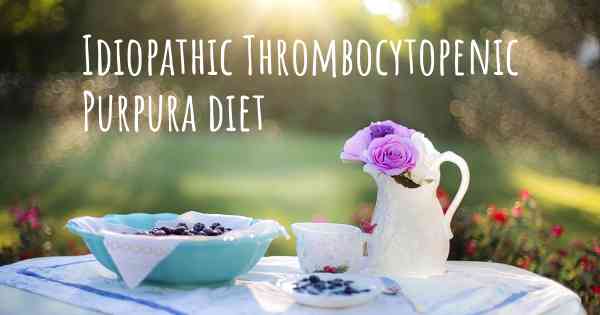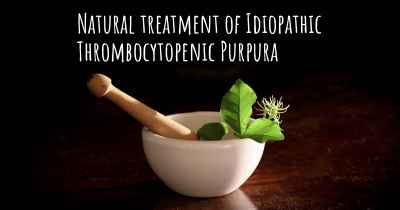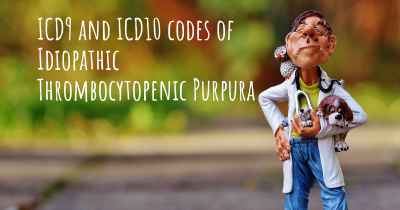Idiopathic Thrombocytopenic Purpura diet. Is there a diet which improves the quality of life of people with Idiopathic Thrombocytopenic Purpura?
Are you aware of a diet that can improve the quality of life of people with Idiopathic Thrombocytopenic Purpura? Is there a diet that is suggested to avoid when having Idiopathic Thrombocytopenic Purpura? See if there is a diet that can improve the quality of life of people with Idiopathic Thrombocytopenic Purpura, recommended and to avoid food when having Idiopathic Thrombocytopenic Purpura

Idiopathic Thrombocytopenic Purpura (ITP) Diet: Improving Quality of Life
Idiopathic Thrombocytopenic Purpura (ITP) is a blood disorder characterized by a low platelet count, leading to easy bruising and bleeding. While there is no specific diet that can cure ITP, adopting a healthy eating plan can help improve the overall quality of life for individuals with this condition. A well-balanced diet can support the immune system, promote healing, and reduce the risk of complications.
The Importance of a Balanced Diet
A balanced diet is crucial for individuals with ITP as it provides essential nutrients that support the body's ability to produce and maintain an adequate number of platelets. A diet rich in vitamins, minerals, and antioxidants can help strengthen the immune system and promote platelet production.
Key Nutrients for ITP
1. Iron: Iron is essential for the production of healthy red blood cells and platelets. Include iron-rich foods such as lean meats, poultry, fish, legumes, nuts, and dark leafy greens like spinach and kale.
2. Vitamin C: Vitamin C aids in the absorption of iron and supports collagen production, which is important for blood vessel health. Citrus fruits, strawberries, bell peppers, broccoli, and tomatoes are excellent sources of vitamin C.
3. Vitamin K: Vitamin K plays a role in blood clotting and can help reduce excessive bleeding. Include foods like leafy green vegetables, Brussels sprouts, broccoli, and fermented soy products like natto.
4. Omega-3 Fatty Acids: Omega-3 fatty acids have anti-inflammatory properties and may help reduce platelet destruction. Include fatty fish like salmon, mackerel, and sardines, as well as flaxseeds, chia seeds, and walnuts.
5. Antioxidants: Antioxidants help protect cells from damage and support overall health. Colorful fruits and vegetables, such as berries, cherries, tomatoes, spinach, and bell peppers, are rich in antioxidants.
Foods to Avoid or Limit
While there are no specific foods that directly worsen ITP, it is important to be mindful of certain dietary factors that may affect platelet function or interfere with medications:
1. Alcohol: Alcohol can interfere with platelet function and increase the risk of bleeding. It is advisable to limit or avoid alcohol consumption.
2. Non-Steroidal Anti-Inflammatory Drugs (NSAIDs): NSAIDs, such as aspirin and ibuprofen, can affect platelet function and should be used with caution. Consult with a healthcare professional before taking any medications.
3. Raw or Undercooked Foods: Raw or undercooked foods may increase the risk of foodborne illnesses, which can further compromise platelet function. Ensure that all foods are properly cooked and handled.
General Dietary Tips
In addition to incorporating key nutrients and avoiding certain foods, here are some general dietary tips to consider:
1. Hydration: Drink an adequate amount of water throughout the day to maintain proper hydration, which is important for overall health and blood circulation.
2. Fiber: Include fiber-rich foods like whole grains, fruits, vegetables, and legumes to support digestive health and prevent constipation, which can strain during bowel movements and potentially trigger bleeding.
3. Small, Frequent Meals: Eating smaller, more frequent meals can help prevent large spikes in blood sugar levels and promote stable energy levels throughout the day.
4. Consult a Registered Dietitian: For personalized dietary advice and guidance, consider consulting a registered dietitian who specializes in working with individuals with blood disorders.
Conclusion
While there is no specific diet that can cure ITP, adopting a well-balanced eating plan can help improve the quality of life for individuals with this condition. A diet rich in key nutrients, such as iron, vitamin C, vitamin K, omega-3 fatty acids, and antioxidants, can support platelet production, strengthen the immune system, and promote overall health. It is important to avoid or limit alcohol, NSAIDs, and raw/undercooked foods. Remember to stay hydrated, include fiber-rich foods, and consider seeking guidance from a registered dietitian for personalized advice.
Posted May 2, 2017 by Jaclyn 1000
Posted Jul 7, 2017 by Theresa 4010
Posted Sep 27, 2017 by jillenid 2570
Posted Sep 29, 2017 by Marília 3570








